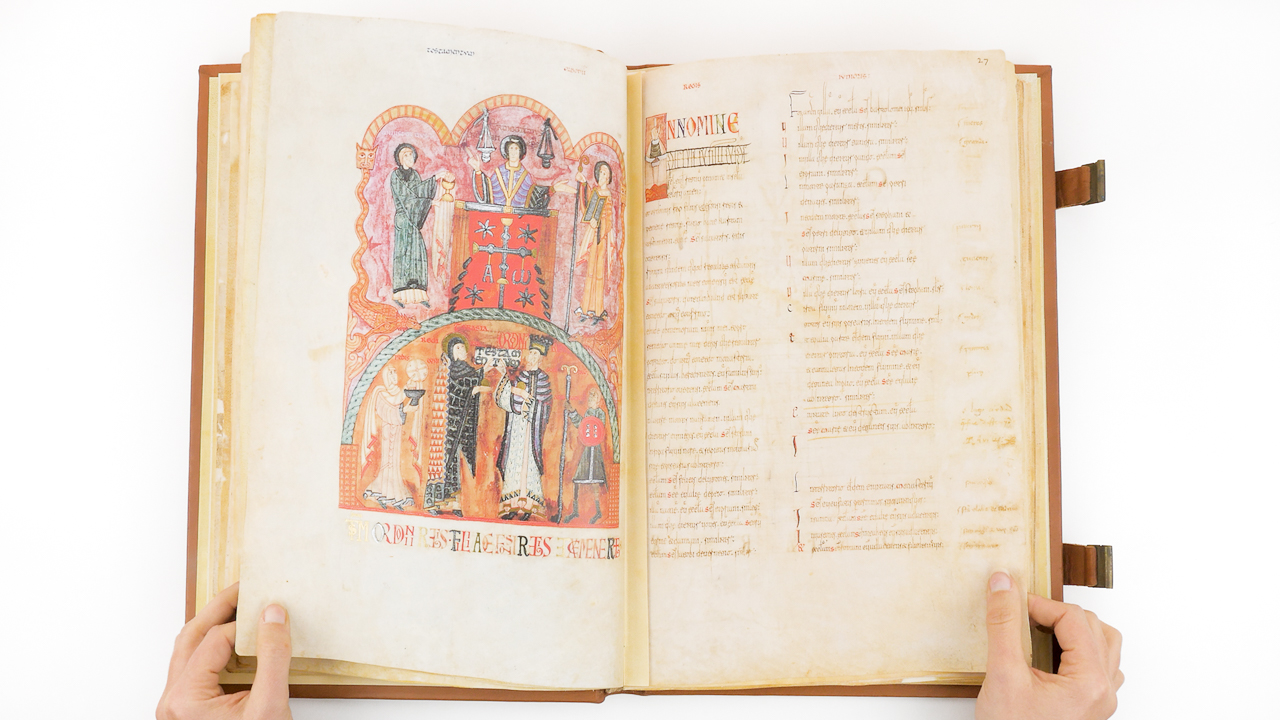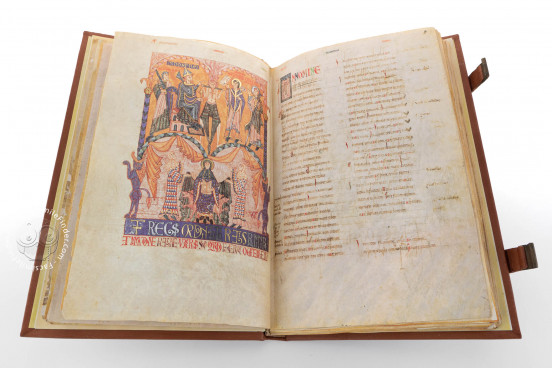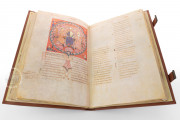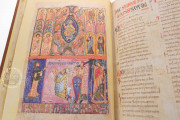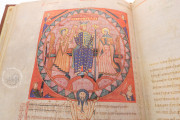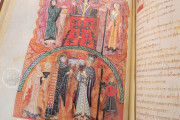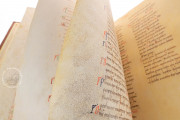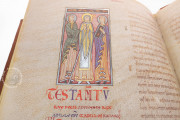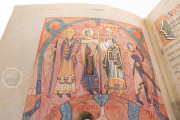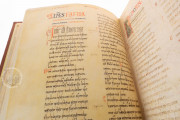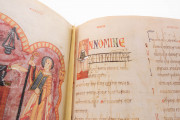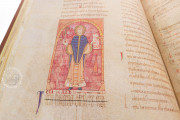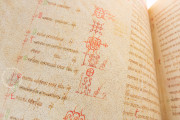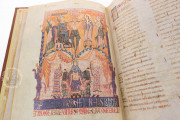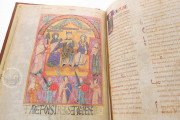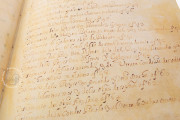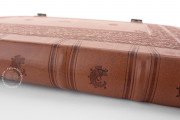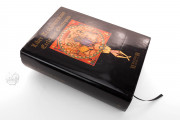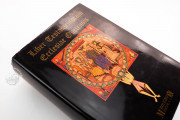In the early twelfth century, Bishop Pelagio of the Cathedral of Oviedo in Asturias created a book compiling the historical and legal records for the cathedral. Today called the Book of Testaments, it is an excellent example of Spanish Romanesque manuscript illumination.
Oviedo, once the spiritual center of Christian Spain, found itself losing political power and religious influence. Completed between 1109 and 1112, with the illustrations added shortly after, the book served as a glorious argument for the pre-eminent position of Oviedo in the changing political and religious climate of the time.
The legal documents are written with lavish display scripts showing stylistic influences from Insular and continental sources. The manuscript is adorned with magnificent half- and full-page illuminations depicting the monarchs of León from Alfonso II to Queen Urraca, with the exception of the lost portraits of Fernando I and Alfonso VI. Important members of the respective courts are also represented, which makes the Book of Testaments an exceptional record of the early kingdoms of Christian Spain.
Kings Like Evangelists
The manuscript’s legal and historical documents are arranged chronologically from 818 to 1118. Each section begins with a half- or full-page illumination depicting the reigning monarch of the period. In the same manner as the evangelist portrait tradition, the kings are positioned as the authors of the subsequent laws and records, which in turn support the power and position of the Cathedral of Oviedo over rivals in Toledo and León.
The success of the book’s influence can be seen in subsequent similar manuscripts such as the Tumbo A of Santiago de Compostela and the Libro de las Estampas of León.
A Kaleidoscopic Range of Scripts
The Book of Testaments is an unusual survival of the direct patronage and practice of a bishop in manuscript production and serves as a remarkable window into the motives of the bishop and the methods at his disposal to influence political relationships.
The texts are generally presented in a single-column layout more akin to court documentation rather than the columnar layout of liturgical works. Varied and inventive display scripts draw from Insular, Carolingian and Late Antique traditions.
Nine Centuries, One Archive
Commissioned and created in the Cathedral of Oviedo in Asturias, modern-day Spain, the manuscript is housed in the cathedral’s archive, a rare example of a book that remained in place through nine centuries.
Although two portraits of kings are now missing, it remains an essential record of the history, position and ambitions of one of the key seats of power in Western Christendom during a tumultuous time of political and monastic reform.
We have 1 facsimile edition of the manuscript "Book of Testaments": Libro de los Testamentos facsimile edition, published by M. Moleiro Editor, 1994
Request Info / Price
